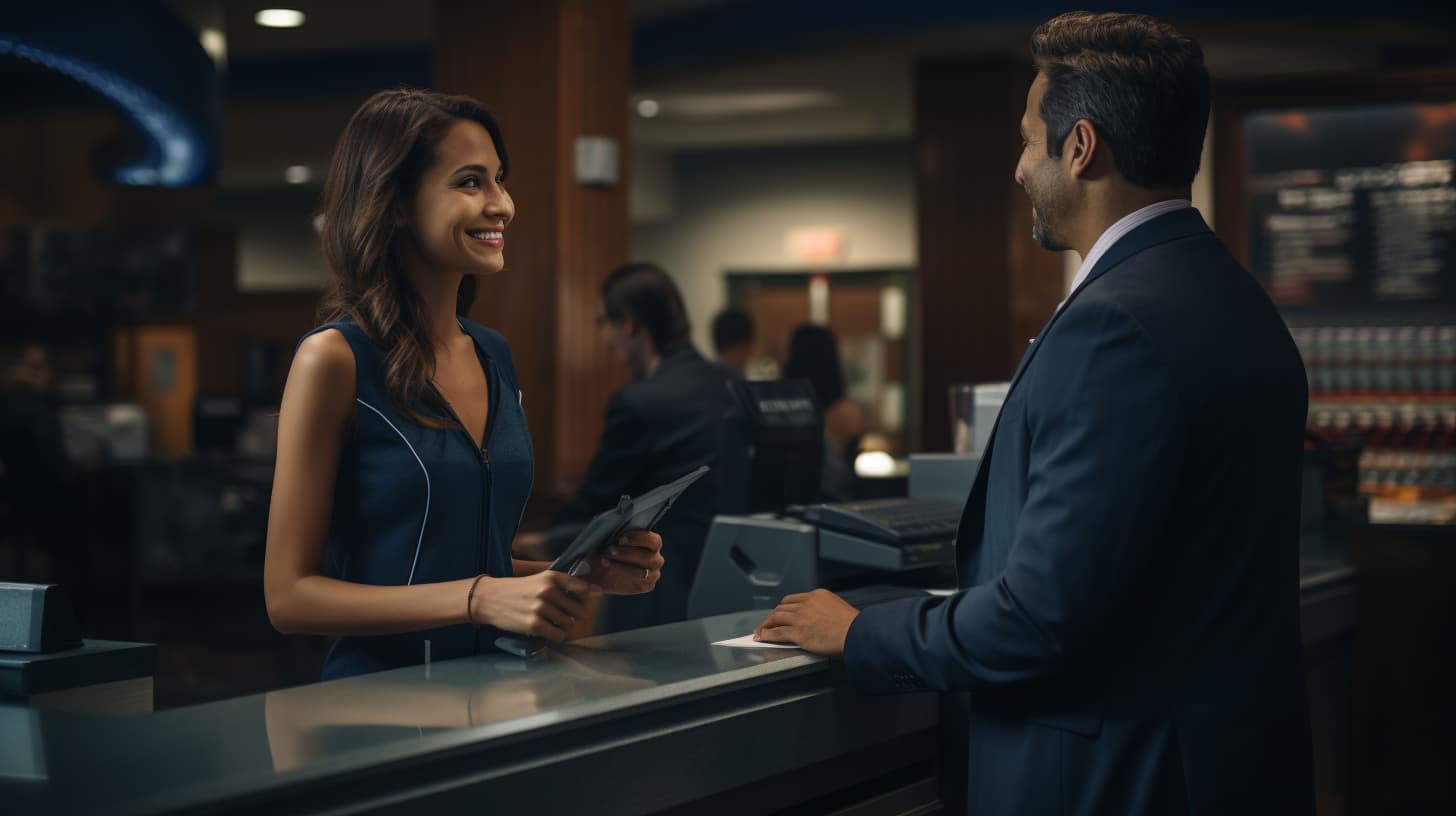Understanding bank check cashing might seem like a waste of time and a thing of the past. In the world of digital transactions, checks still hold substantial relevance. Being equipped with a clear understanding of your rights, responsibilities, and the processes related to cashing a check will empower you to steer clear of any potential mishaps or confusion.
This in-depth exploration will take you on a journey, starting from the fundamental components of a check, such as the account number, routing number, check number, and signature line, to the significance of each detail in the check cashing process. Furthermore, it will elucidate the procedures involved in cashing a check at your bank and the possibility of encountering any fees or delays.
Understanding Checks
Understanding the Components of a Check
When cashing a check, it’s crucial to know the various parts of a check and their importance. There are several components of a check that are pertinent to the process, including the account number, routing number, check number, and signature line.
The account number is a unique number assigned to each checking account within a bank. This becomes a specific identifier for your bank to know where to draw the funds from. This number often presents itself on the bottom of the check, usually located to the right or middle of the routing number.
The routing number is a distinct number that identifies your specific financial institution. It typically consists of nine digits and appears on the left of the account number on the bottom of a check. Every bank and banking institution holds its unique routing number. This plays a vital role as it tells which bank to withdraw the funds from when the check is cashed or deposited.
The check number is usually the last set of numeric values located at the bottom of a check. It isn’t strictly pertinent for cashing or depositing a check, but it helps for the check writer’s record keeping. It assists in identifying each individual check to maintain an account balance and track payments.
The Importance of the Signature Line
Finally, another important aspect of the check is the signature line. This is where the person or company issuing the check signs their name. A check is not valid and cannot be cashed or deposited unless it has been signed on this line by the account holder. The significance of a signature could relate to fraud protection and validating the check.
Conclusively, each part of a check holds its unique importance when it comes to cashing or depositing. Every detail on a check is crucial for verification, fraud prevention, and ensuring that the appropriate accounts are being debited and credited.

Bank Check Cashing: Cashing at Your Own Bank
Investigating the Process and Policies of Cashing a Check at Your Bank
Before you set out to cash a check at your bank, it’s advisable to begin by learning about the bank’s specific policies. Most banks have straightforward processes for cashing checks for their customers. Generally, you’ll need to visit a branch in person, present the check to a teller, and provide suitable ID. Depending on your bank’s policies, however, you may also be able to cash your check using an ATM or mobile banking app.
Convenience stores such as 7-eleven check cashing options allow for ATM withdrawals.
Identification Requirements for Cashing a Check
When you’re going to cash a check at your bank, you should prepare to verify your identity. Most banks require at least one form of ID. While you can cash a check without ID, it’s not the preferred way to cash a check. Typically, this can include a driver’s license, passport, or another government-issued ID. Your bank may also accept a student ID, military ID, or even a birth certificate, but these policies can vary between financial institutions.
Understanding the Fees Involved in Cashing a Check
Most banks won’t charge a fee if you’re cashing a check drawn on that bank and you have an account there. But some banks might impose fees for specific types of checks such as out-of-state checks or large-dollar checks. It’s important to familiarize yourself with your bank’s check-cashing policies to avoid any unexpected costs.
Possible Delays in Clearing a Check
Note well that having a check cleared does not always concur with having immediate access to all the funds. Banks often need short holding periods to ensure that the check won’t bounce. Your bank’s policy may impose a hold on checks for reasons such as: the check is above a certain amount, the check is non-local, or you’ve recently opened your account. Some rare cases like questionable check details or account history could also lead to holds.
The timing of check cashing can also influence this process. If you deposit a check late in the bank day, your bank may not start processing it until the next business day.
Knowing these factors can help you understand any delays you may experience when cashing a check. For any unique situations or unclear details, always refer to your bank’s specific policies or consult a bank representative.

Cashing at Issuing Bank or Check Cashing Stores
Cashing a Check at the Issuing Bank
One alternative you can explore if you do not have a bank account is visiting the issuing bank. You still have a bank check cashing option. Here are steps to follow for successful cashing of bank checks:
- Identify the Bank: The first step is to look at the check and find out the name of the bank that issued it.
- Visit the Bank: Go to a local branch of the bank that issued the check. Remember to bring along your identification.
- Present Check to Bank Teller: Show the check to the bank teller, clearly indicating that you wish to cash it. Some banks may ask you to endorse the check by signing the back.
- Pay Fees (If Any): Some banks may charge a fee to cash a check for non-customers. Fees may vary by bank and the amount of the check.
- Receive Cash: The bank teller will confirm the check details, such as the amount and the account it is drawn from. Once the check is verified, the bank teller will hand you the cash.
Pros of cashing a check at the issuing bank include instant access to your cash and not needing an existing bank account. However, some cons are travel constraints if the bank is not near you, possible fees for non-customers, and potential concerns with large checks. These can face additional scrutiny or hold times.
Cashing a Check at Check-Cashing Stores
Check-cashing stores are another alternative for those without a bank account. Here are the steps to do so:
- Choose a Check Cashing Store: Not all check-cashing stores are the same. Assess your options based on fees, service speed, and credibility.
- Bring Your Check and Identification: Present the check that you want to cash, along with your ID. This could be a driver’s license, state ID, military ID, or passport.
- Pay Fees: Check-cashing stores typically charge a fee or percentage of the check amount for their services. Ensure you are aware of these costs before you proceed.
- Collect Your Cash: After the check-cashing store verifies the check, they will cash it and give you the money, minus any service fees.
Check-cashing stores provide a convenience by cashing checks quickly even if you do not have a bank account, which is a significant pro. Even grocery store check cashing is a popular option for some.
However, the cons include potentially high service fees, which can add up over time if you frequently use such services. Some may also not stay open beyond regular business hours, limiting when you can get your checks cashed.

Understanding Endorsement and Other Rules
Understanding Endorsement of Checks
Endorsing a check involves signing one’s name on the back of the check, a necessary step for cashing or depositing it. Checks should be endorsed at the bank immediately before cashing or depositing them to prevent unauthorized usage if the check is lost or stolen. The signature line is typically located on the back, with instructions indicating where to sign and how to endorse correctly.
Checks may require different types of endorsements based on the instructions on the check. A blank endorsement, the most common type, simply requires the signature of the payee. You can even cash a check in someone else’s name if they endorse it over to you.
A restrictive endorsement restricts further action on the check, such as “For Deposit Only,” followed by the account number into which it’s to be deposited. A special endorsement, on the other hand, allows the check to be transferred to another party, with the notation “Pay to the order of” followed by the transferee’s name.
Time Frame for Cashing or Depositing Checks
The time frame in which a check must be cashed or deposited varies. Banks typically honour checks for 180 days (about six months) from the date of issue, but some might choose to honor older ones. However, it’s always best to cash or deposit checks as soon as possible to avoid potential complications.
Legal Aspects of Check Cashing
There are check cashing laws and legal implications if a check is not processed within its validity period, which can range from the check bouncing to legal repercussions for the signatory. Additionally, signing a check over to another person, or accepting a check signed over to someone else, can have legal repercussions. The Uniform Commercial Code, adopted by most U.S. states, governs these transactions and confers substantial liability on the signatory if the checks are mishandled, lost, or stolen.
Bouncing Checks and Penalties
If a check bounces, or is returned due to insufficient funds, there are typically penalties for both the writer and the recipient of the check. Fees may be levied while the recipient could potentially take legal action to recuperate funds. Writing bad checks intentionally is considered check fraud, a criminal act that can lead to fines or imprisonment.
Understanding the proper way to endorse, cash, or deposit checks and understanding the related rules and legal implications is critical. Promptly cashing or depositing checks, meeting all endorsement requirements, and ensuring sufficient funds are available can save time, financial resources, and potential legal trouble.

Checks may come with a set of rules, procedures, and regulations; understanding them further facilitates ensuring you get your money on time and without any unnecessary complications. Whether you are dealing with your own bank, the issuing bank, or a check-cashing store, a comprehensive grasp of the protocols and potential snags is vital.
To add a finishing touch, the document explores the crucial aspect of check endorsement, along with additional rules and limitations, such as the time frame in which a check should be cashed. Let this knowledge serve as your companion, offering you guidance at every step of dealing with checks.



